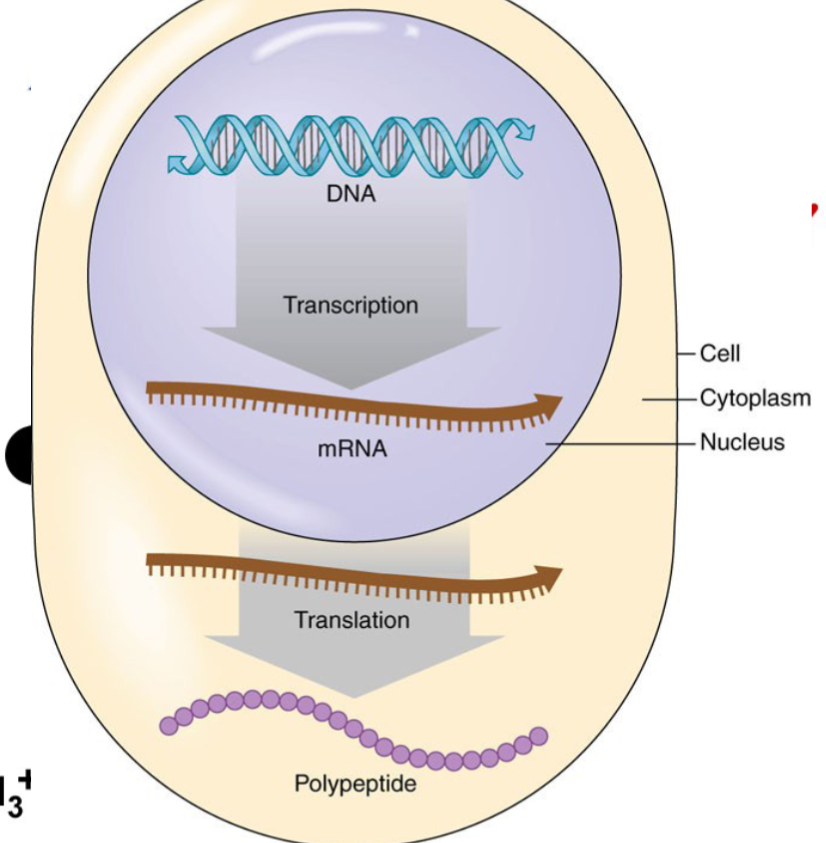Lecture 5 - DNA Structure, Function, Replication
Announcements:
- Get a scantron (882E) for the MT next week.
- It'll cover the parts of Ch 7 that we cover today.
- 50 Q's
- Prioritize the lecture slides, if you do the reading you'll get some bonuses.
Life Depends on DNA
Deoxyribonucleic Acid (DNA) stores information to make proteins; this makes life possible. These are the parts that compose of something that has emergent properties.
Each molecule is a polymer made from 4 nucleotides (ie: sugar, phosphate, and nitrogenous base). These are the monomers.
Think about it! Up until the 1950's, many believed proteins and not DNA comprised the chemical component of heredity. There are people that were born in a world where we didn't know that DNA was how we passed onto our traits! James Watson himself is still alive, the discoverer of the DNA structure and function that it had!
Chromosomes are made up of surrounded histones surrounded by DNA:
Hershey & Chase made an elequent experiment. It showed that it was actually DNA primarily in these Histones that were the chemical components of heredity. Their experiment is as follows; they used T-2 Bacteria Phage. They used the virus structure below to infect the bacteria phage:
The experiment used
While this is going on, Watson & Crick used Chargaff's base pair rules (DNA has equal amounts of A's and T's, and G's and C's) and Rosalind Franklin and Maurice Wilkins' X-ray diffraction data to elucidate the structure of DNA.
This is a controversial "think-tank" research paper. This is because Rosalind was trying to hide her research from Watson & Crick because she got super resolute data (even more resolute from what we have today). Essentially, her experiment was a "super-double slit experiment" where an X-ray source heats a lead screen with holes, and a detector creates a "diffraction pattern" of the constructive-destructive interference.
But Maurice Wilkins jumped ship, took the data, and shared it with Watson and Crick. She never got the credit she deserved, while Watson and Crick got all the credit. Further, Watson and Crick were very different minded, a benefit in working together, but they didn't like each other.
You need to know all the names mentioned above and some of their history.
Anyways, the DNA double helix is composed of two complementary antiparallel polynucleotide strands. Sugar phosphate backbones (or phosphoiester backbones) are held together by H-bonding or "base pairing" between the bases:
Complementary because one strand determines the sequence of the other. Both strands can be used as a template for the other strand. And that's how it works! Here, more chemically the 5' end is connected to the phosphate end, and the 3' is the sugar end (since the backbone alternates between the two, so one will be on the end). These names come from the fact that we use
There's a tremendous amount of DNA in a cell. The way we measure DNA is the number of base-pairs long it is. 6.4 billion base pairs in a human cell, which stretches 6 feet laid end to end. The reason that DNA is wrapped around these Histone's is that we need to fit the DNA into small spaces. An organism's genome is all of the genetic material in its cells; its entire genetic completement. The whole thing is a single strand, there really are no ends (there are 2, but with the size of the thing it's nigh impossible to find).
In eukaryotes, most of the DNA is in the nucleus in discrete stretches known as chromosomes. Bacteria have circular chromosomes, while eukarya have linear ones:
Functional units of sequence on these chromosomes constitute what we call genes. Chromosomes contain multiple genes:
- There's 26 chromosomes
- There's thousands of genes!!!
DNA Stores Genetic Information
- In the 1940s, we found that one gene controls production of proteins
- In the 50s, Watson & Crick described this flow of information from nucleic acids (DNA & RNA) to proteins as the "Central Dogma of Molecular Biology"
But how does a linear sequence of nucleotides get converted into a linear sequence of amino acids?
- DNA is in the eukaryotic nucleus
- Proteins are synthesized in the cytoplasm of a eukaryotic cells
- Information transfer must be indirect... via RNA
So transcription is the process of taking DNA and making RNA. While translation is making proteins from the RNA.
- Transcription (
): DNA RNA - Translation (
): RNA Proteins

In transcription, genetic information is copied into messenger RNA (mRNA) in the nucleus. mRNA is then processed and exported to the cytoplasm. The information within the mRNA is then translated from "nucleotide" to "amino acid" in the cytoplasm during translation. Both processes are regulated and result in a phenotype (biological outcome).
The genes that encode the phenotype in the DNA itself is the genotype.
Know the difference between DNA and RNA:
- DNA is composed with deoxyribose (H > OH), while RNA has ribose (w/ the OH === H)
- DNA has A, C, T, and G. RNA has A, C, U, and G. U/T pairs with A and C pairs with G.
- DNA is double stranded. RNA is single-stranded.
- DNA stores RNA and protein encoding information. RNA carrries protein-encoding information to help make proteins.
About the Exam
You only need to go up to slide 11 will NOT be covered on the exam.